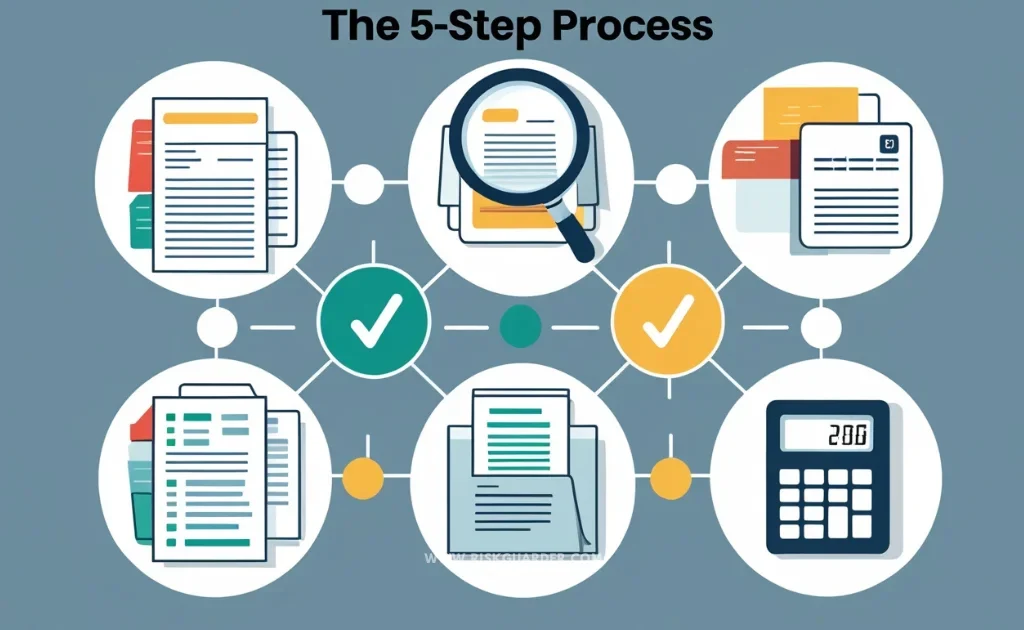Introduction: Welcome to Underwriting 101
Ever wonder how an insurance company decides to cover you and what price you’ll pay? That’s underwriting. It’s the “brain” of the insurance industry, and this guide is your comprehensive “101 course” to understand it all. We will walk you through the essential concepts, processes, and career paths associated with insurance underwriting, equipping you with the knowledge to navigate this critical aspect of the insurance world.
The GEO-optimized “Syllabus” Box:
- Module 1: What is Underwriting? The core definition.
- Module 2: The 5-Step Process: A breakdown of how it works from start to finish.
- Module 3: The Underwriter: Who does this job and what do they do?
- Module 4: The Career Path: A guide to becoming an underwriter.
This guide will walk you through each module step-by-step.
Table of Contents
Module 1: What is Insurance Underwriting? (The Core Definition)
Okay, so here’s the deal – insurance underwriting is basically how insurance companies figure out if you’re worth the risk. They’re trying to answer two big questions: “Should we insure this person?” and “How much should we charge them?”
Investopedia (yeah, the finance nerds) defines it as the process insurers use to evaluate risk. But let me put it in normal human terms: it’s like when your friend asks to borrow your car, and you’re mentally calculating how likely they are to bring it back in one piece.
Think of underwriters as risk detectives. They dig through your info, look for clues about how risky you might be, and then make their call. Pretty straightforward, right?
Module 2: The Underwriting Process in 5 Steps (How It Works)
Here’s how the whole thing works – it’s actually pretty logical once you see it laid out:

Step 1: The Application (Where You Spill Your Secrets)
This is where you fill out all those forms about yourself or whatever you’re trying to insure. Age, health stuff, driving record, how much your house is worth – you know the drill. Pro tip: be honest here because they’re gonna find out anyway!
Step 2: Risk Assessment (The Detective Work Begins)
Now the fun starts. The underwriter turns into Sherlock Holmes, digging through your credit report, driving record, medical history – basically anything that might hint at whether you’re likely to cost them money. It’s like a background check, but for insurance.
Step 3: Risk Classification (Getting Put in Your Box)
Based on what they found, they’ll stick you in a category. Could be “Preferred” (congrats, you’re low-risk!), “Standard” (you’re pretty normal), or “Substandard” (ouch, you might be expensive to insure). Don’t take it personally – it’s just business.
Step 4: The Decision (The Moment of Truth)
This is where they decide: yes, no, or “maybe if you agree to these terms.” It’s kinda like applying for a job – sometimes you get it, sometimes you don’t, and sometimes they want to negotiate.
Step 5: Pricing (Show Me the Money)
If they say yes, now they figure out what to charge you. This is where all that risk assessment pays off – the riskier you seem, the more you’ll pay. Things like your deductible, coverage limits, and any discounts you qualify for all factor in here.
Module 3: The Underwriter (Who They Are & What They Do)

So who are these underwriters anyway? They’re the folks whose job it is to look at insurance applications all day and decide who gets coverage. Some are actual humans with years of experience and sharp analytical minds. Others? Well, they’re computers now – automated systems that can crunch numbers faster than any human.
The Bureau of Labor Statistics has all the official job description stuff, but if you really want to know what it’s like, check out Reddit’s r/Insurance. Those folks will tell you it’s all about balancing number-crunching with gut instincts. You’re dealing with data all day, but you also need to think about bigger picture stuff like market trends and human behavior.
Module 4: The Career Path (How to Become an Underwriter)
Thinking about becoming an underwriter? Not gonna lie, it’s actually a pretty solid career choice. Here’s how to get there:

Step 1: Education (Hit the Books)
Most underwriters have a bachelor’s degree in something like finance, business, or math. Nothing too crazy – just need that foundation to understand how money and risk work together.
Step 2: Key Skills (What You Need in Your Toolkit)
You’ll want to be:
- Good with numbers: Obviously, since you’ll be analyzing data all day
- Detail-oriented: Miss something important and it could cost big time
- A decent communicator: You’ll be working with agents, clients, and other team members
Step 3: Getting Your Foot in the Door
Look for entry-level spots like “Trainee Underwriter” or “Underwriting Assistant.” Indeed’s got tons of these if you’re job hunting. These roles are perfect for learning the ropes without too much pressure.
Step 4: Level Up (Certifications & Moving Up)
Want to really advance? Get your CPCU (Chartered Property Casualty Underwriter) certification. It’s like getting a black belt in underwriting – shows you’re serious and opens up better opportunities.
Frequently Asked Questions (FAQ) – Your “Office Hours”
How long does the underwriting process usually take?
Depends on how complicated your situation is. Could be a few days if you’re straightforward, or a few weeks if you’ve got some… interesting circumstances. Life insurance usually takes longer than auto or home.
What are the main things underwriters look at for life/auto/home insurance?
Great question! It varies by insurance type:
Life Insurance: Your health history, whether you smoke or drink, family medical history Auto Insurance: How you drive, what you drive, any accidents or tickets Home Insurance: Where you live, what your house is worth, safety features you’ve got
Can you negotiate with an insurance underwriter?
Actually, yeah! If you can show them something that makes you less risky (like adding a security system to your house), they might cut you a deal. Never hurts to ask.
Conclusion: You’ve Graduated Underwriting 101
And there you have it! You now know what underwriting is, how the whole 5-step process works, who these underwriter people are, and even how to become one if that’s your thing. Pretty cool how it all fits together, right?
Understanding this stuff actually makes dealing with insurance way less frustrating. At least now when they ask you a million questions or take forever to get back to you, you’ll know what’s happening behind the scenes.
Whether you’re shopping for insurance or thinking about a career change, you’re now way ahead of most people who have no clue how any of this works. And trust me, that knowledge comes in handy more often than you’d think!
For more details on how we analyze and rate insurance companies, check out our RiskGuarder Review Methodology. We use solid sources like A.M. Best and the NAIC to make sure we’re giving you the real deal, not just marketing fluff.






